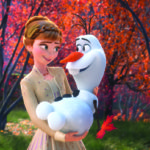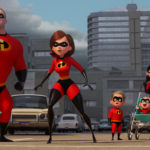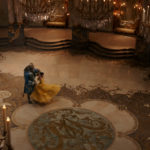“Mary Poppins Returns” a Dazzling Sequel
By Melanie Gable
*Hi, everyone! I’m so excited that Erin invited me to guest write this review for her blog! I attended a press screening for “Mary Poppins Returns” for the purposes of this post. All thoughts and opinions are my own.*
When Walt Disney Studios first announced that they would be making a sequel to their beloved, Oscar-winning 1964 film “Mary Poppins,” Disney fans’ reactions on social media were decidedly mixed. A movie musical that combined live action film with animation, the original “Mary Poppins” has stood the test of time and captivated multiple generations. Some of the film’s enthusiasts were elated by the prospect of revisiting Cherry Tree Lane (the setting of the first movie) and seeing a new Poppins story, while purists thought the property should be left alone.
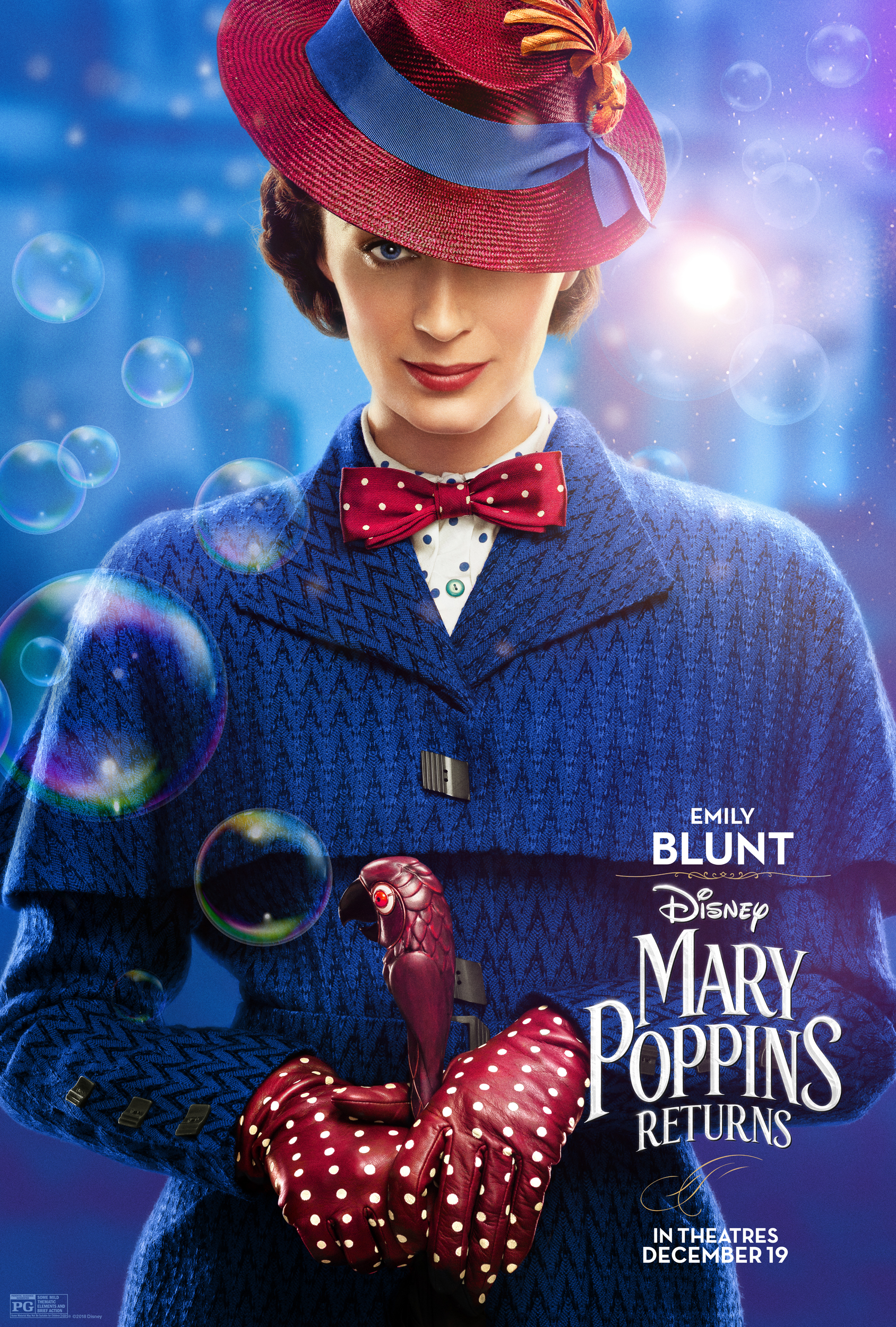
But fans needn’t have worried, because “Mary Poppins Returns” simultaneously pays homage to the original film and does its own dazzling thing, exploring new territory in the Poppins-verse, with nostalgic nods to “Mary Poppins” peppered throughout the sequel. Deftly directed by Rob Marshall (“Into the Woods,” “Chicago”), who certainly knows his way around a musical, “Mary Poppins Returns” is a lively, enchanting, and loving tribute to P.L. Travers’ Poppins books and a (practically) perfect companion piece to the first film. If you missed what the cast had to share about the film the other day, make sure to check that out too!
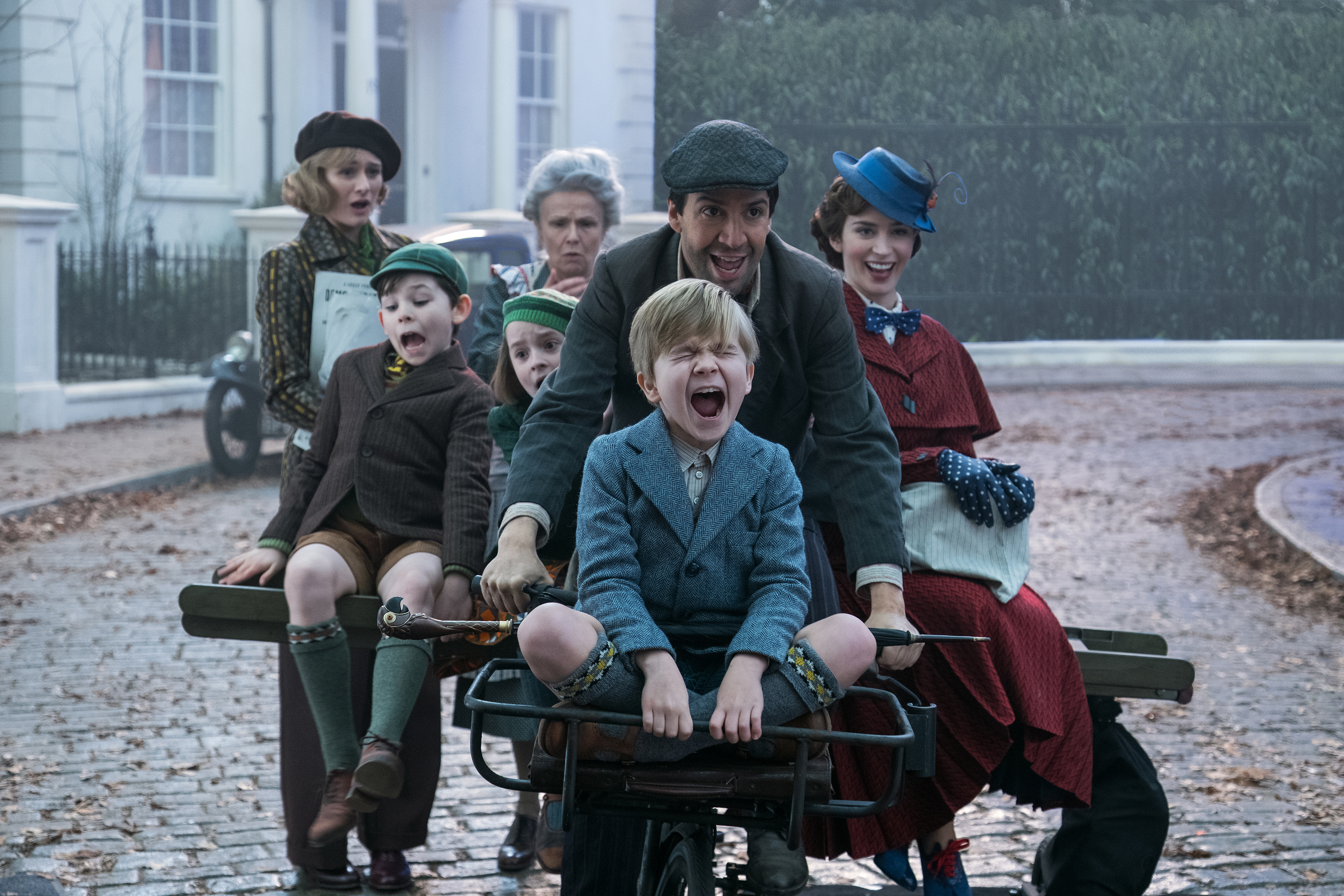
The movie takes place in Depression-era London, two decades after the events in “Mary Poppins.” Jane and Michael Banks, the sibling charges of the magical nanny in the original movie, are all grown up, with grown-up problems. Michael (Ben Whishaw), now a struggling artist and father of three children, is dealing with the recent passing of his wife and the subsequent chaos his house is thrown into as he attempts to keep up with the financial and emotional responsibilities of single fatherhood. Jane (Emily Mortimer), a busy, independent woman campaigning for workers’ rights, still has the warmth and sweetness of her childhood self, checking in on and helping her brother whenever she can. Michael’s loyal housekeeper and cook, Ellen (Julie Walters), is getting on in years and, though well-intentioned, is prone to being scatterbrained and clumsy. The Banks children – Annabel (Pixie Davies), John (Nathanael Saleh), and Georgie (Joel Dawson) – assume additional responsibilities to help with the household as various tasks, such as grocery shopping, fall through the cracks. We are also introduced to Jack (Lin-Manuel Miranda), a charming, optimistic lamplighter and acquaintance of Bert, Dick Van Dyke’s chimney sweep character in “Mary Poppins,” who is soon drawn into the Banks’ family drama.
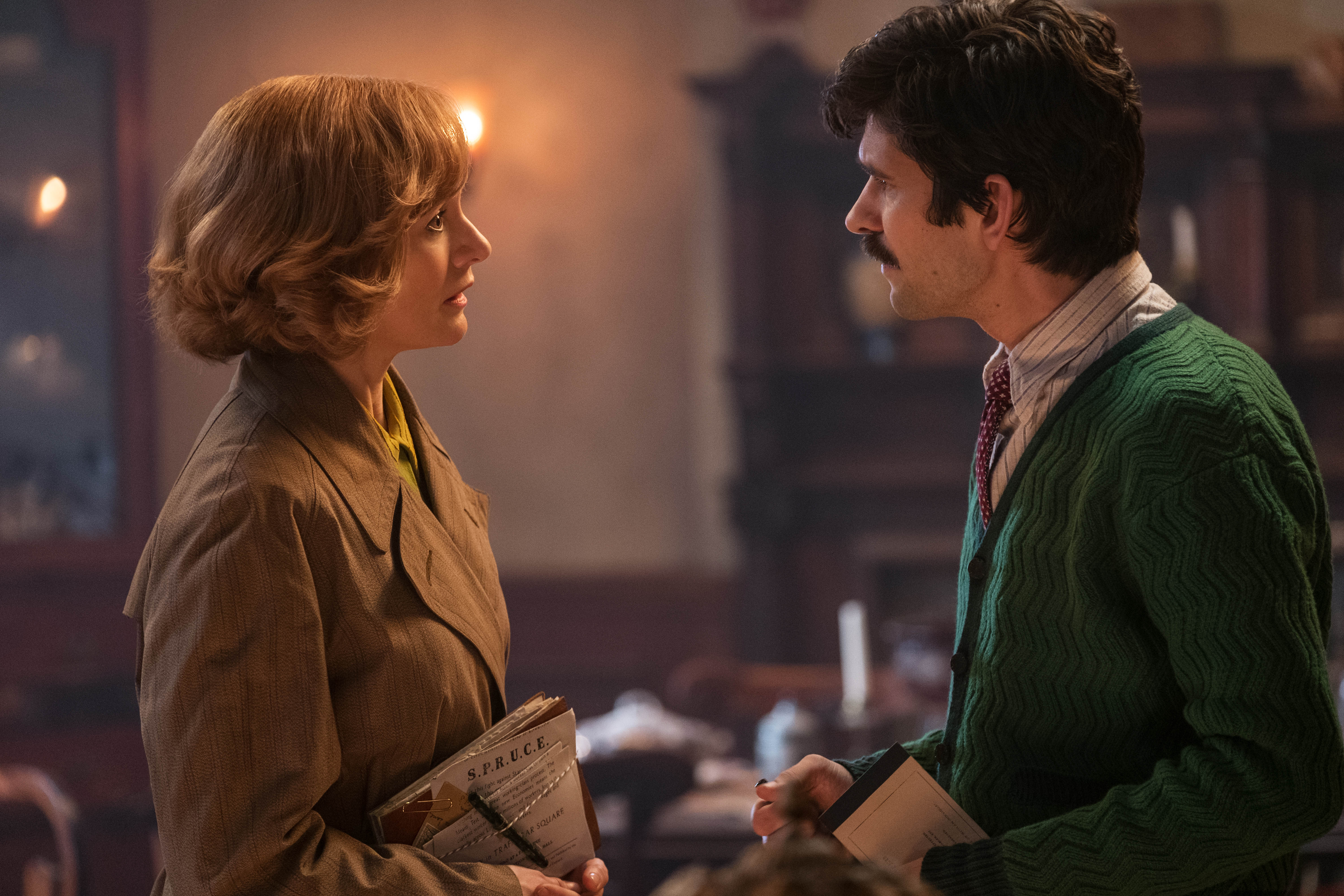
Fidelity Fiduciary Bank, the place of Michael’s employment, soon comes calling with bad news: due to late payments, Michael must now pay back his entire mortgage on 17 Cherry Tree Lane by the end of the week, or he will lose the property. Though the sum is more than Michael makes in a year and all seems lost, there is one ray of hope – the shares his father, a partner at Fidelity Fiduciary, owned in the bank. As Jane and Michael search the home for the shares certificate, they come across various mementos from their childhood, including the lovingly patched kite featured in the song “Let’s Go Fly a Kite” at the end of “Mary Poppins.” In a moment of frustration and grief, Michael takes a box of his childhood relics to the curb, including the kite, to be picked up for disposal. The kite almost immediately catches a gust of wind, skittering along the street and eventually taking to the sky.
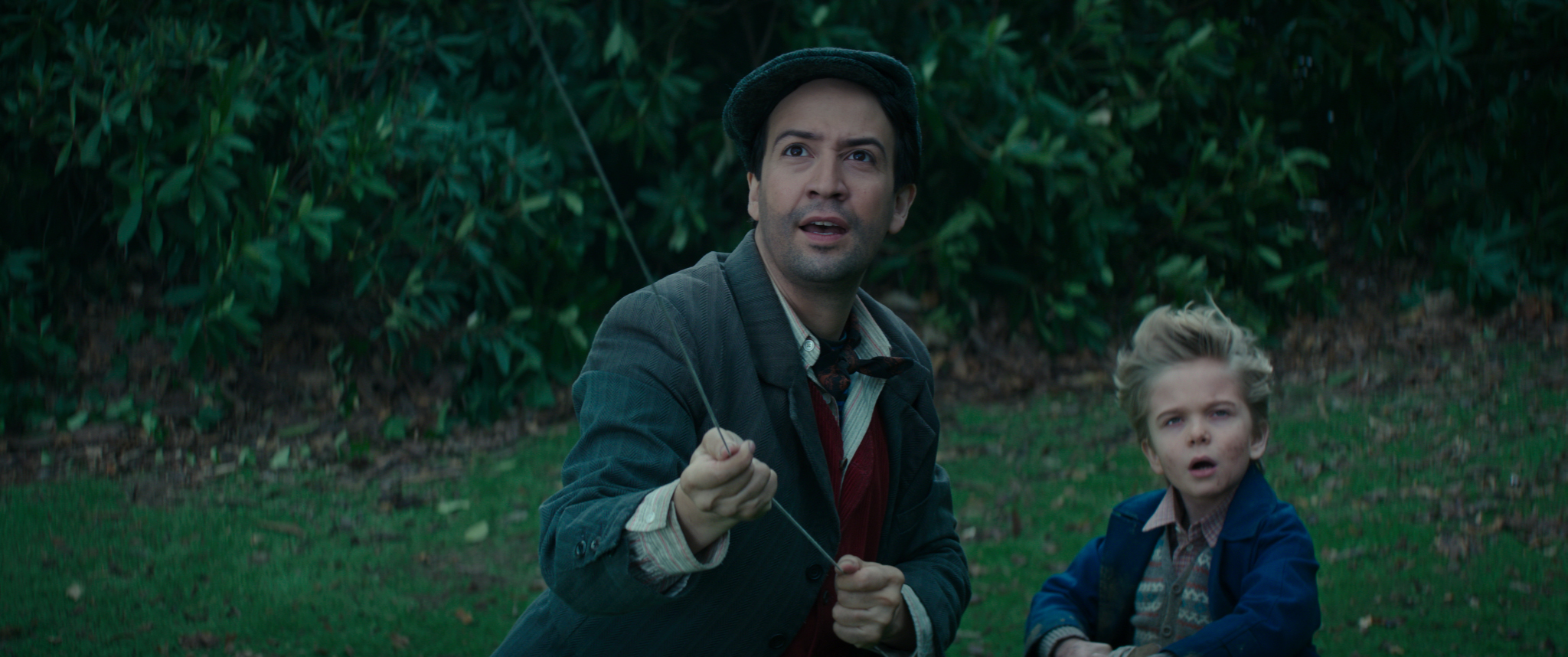
As the Banks children cut through the local park on their way to the market, Georgie spots the old kite flying wildly in the wind and begins to chase it. As the kite ascends higher and higher into the cloudy sky, Georgie finally catches hold of the string and crosses paths with Jack the lamplighter, who helps him reel it in. Into the fray floats Mary Poppins in her signature style, holding the kite in one hand and her parrot umbrella in the other, chin held high, toes pointed outward, and an air of mystery and magic about her. Jane and Michael are shocked when Mary Poppins arrives unceremoniously at 17 Cherry Tree Lane with Michael’s children in tow. She’s clearly the same nanny they remember, and shows no visible signs of aging since they were children. At Jane’s insistence (because Poppins might be down on her luck and need the work), Michael reluctantly hires Mary Poppins to care for his children. As is her way, Mary Poppins begins infusing fun and whimsy back into the Banks’ children’s lives, while steering the family toward the solutions to their problems behind the scenes.
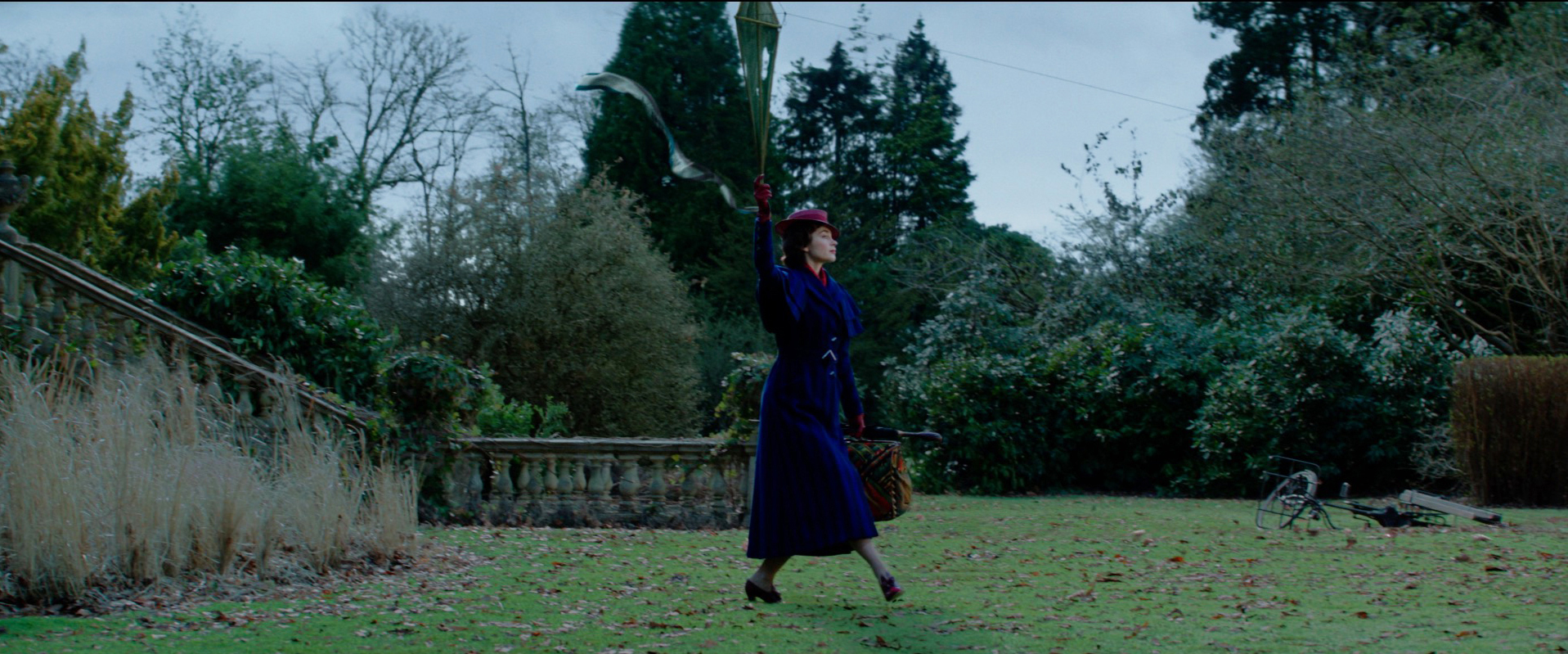
Julie Andrews won the 1965 Oscar for Best Actress in a Leading Role for her work in “Mary Poppins,” and Emily Blunt was not immune to the pressure that comes with taking on such an iconic role. As Blunt remarked at a recent press conference, no one wanted to see her do “a cheap impersonation” of Andrews’ performance. Drawing inspiration from P.L. Travers’ books and brainstorming sessions with Rob Marshall, Blunt has created a Poppins that is her own, with enough of a through-line from the first movie to be believable as the same character. With her “practically perfect” prim style, crisp accent, and unshakable confidence, Blunt commands every scene she’s in, behaving like a boss who’s merely masquerading as the hired help. Her Poppins contains multitudes: vanity and generosity, compassion and rudeness, magic and mayhem, a quick wit, and moments of vulnerability. Though Blunt doesn’t possess the enviable vocal range Andrews demonstrated in “Mary Poppins” (and who does, really?), her singing is absolutely lovely and well-suited to the songs written for her. She gives an excellent, triple-threat performance, tackling cheeky dance numbers, tender ballads, and nuanced acting moments with heart and gusto. In short, she’s a sublime Mary Poppins and perfectly cast in the role.
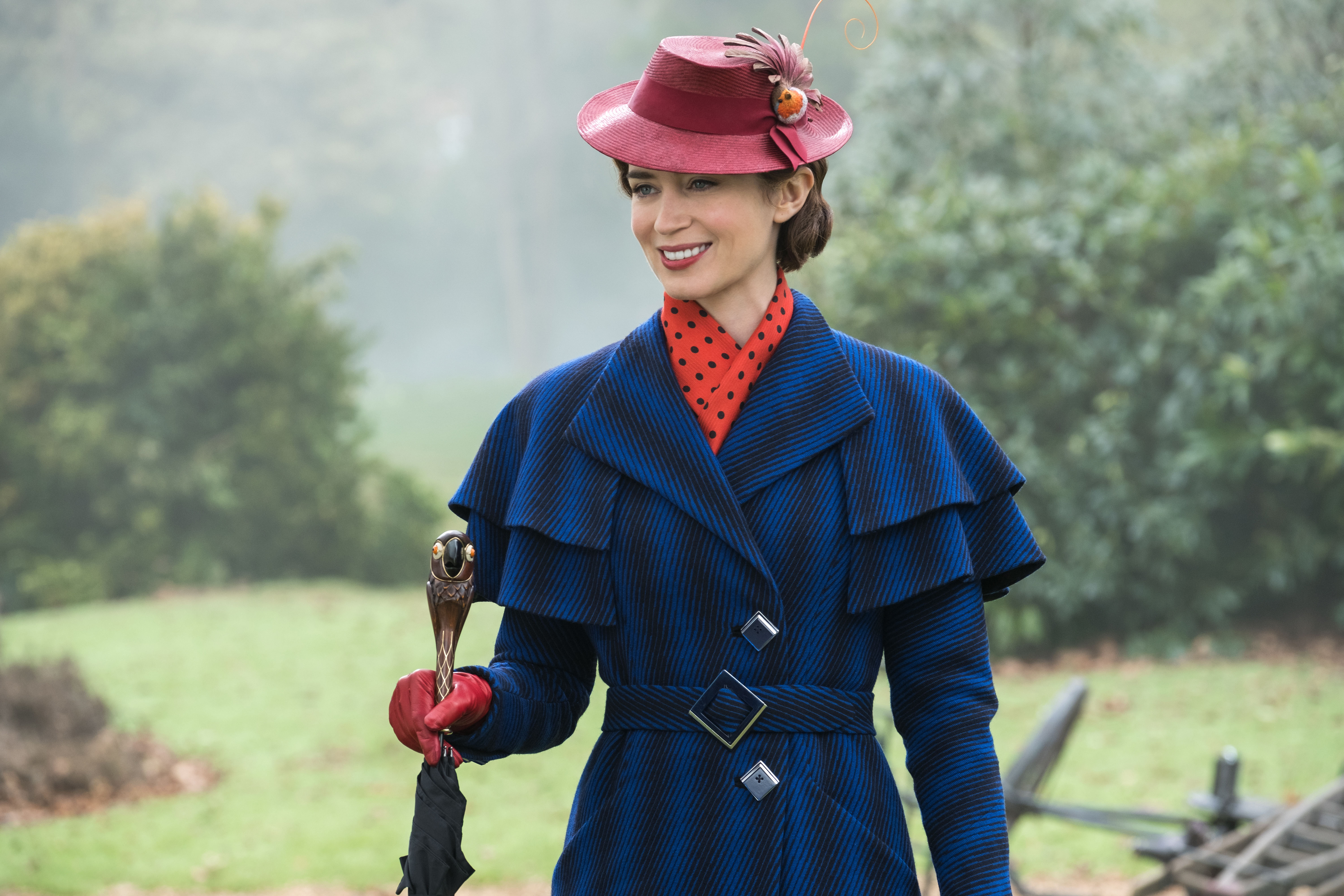
When Mary Poppins meets Jack the lamplighter, there’s an immediate, if platonic, connection. Maybe it’s because Jack is appropriately awed by her presence and reminds her of her old friend Bert, but Mary Poppins quickly draws Jack into her magical adventures. Broadway star Lin-Manuel Miranda (“Hamilton”) is utterly charming in the role of Jack, showing off his skills as the consummate showman in nearly every scene. He sings and dances right along with Blunt and ably conquers the multiple physical feats asked of him, including sliding down tall banisters, balancing a bike filled with his fellow actors, or dancing with a lit torch. He is an absolute asset to the movie, and showed no signs of this being his first starring film role. His enthusiasm as a performer is contagious, but Miranda also knows when to pull back and let the other actors around him have their moments in the spotlight. Jack is impossibly optimistic, literally shining a light in the darkness for the people around him, and it’s refreshing to see such a character in a current film.
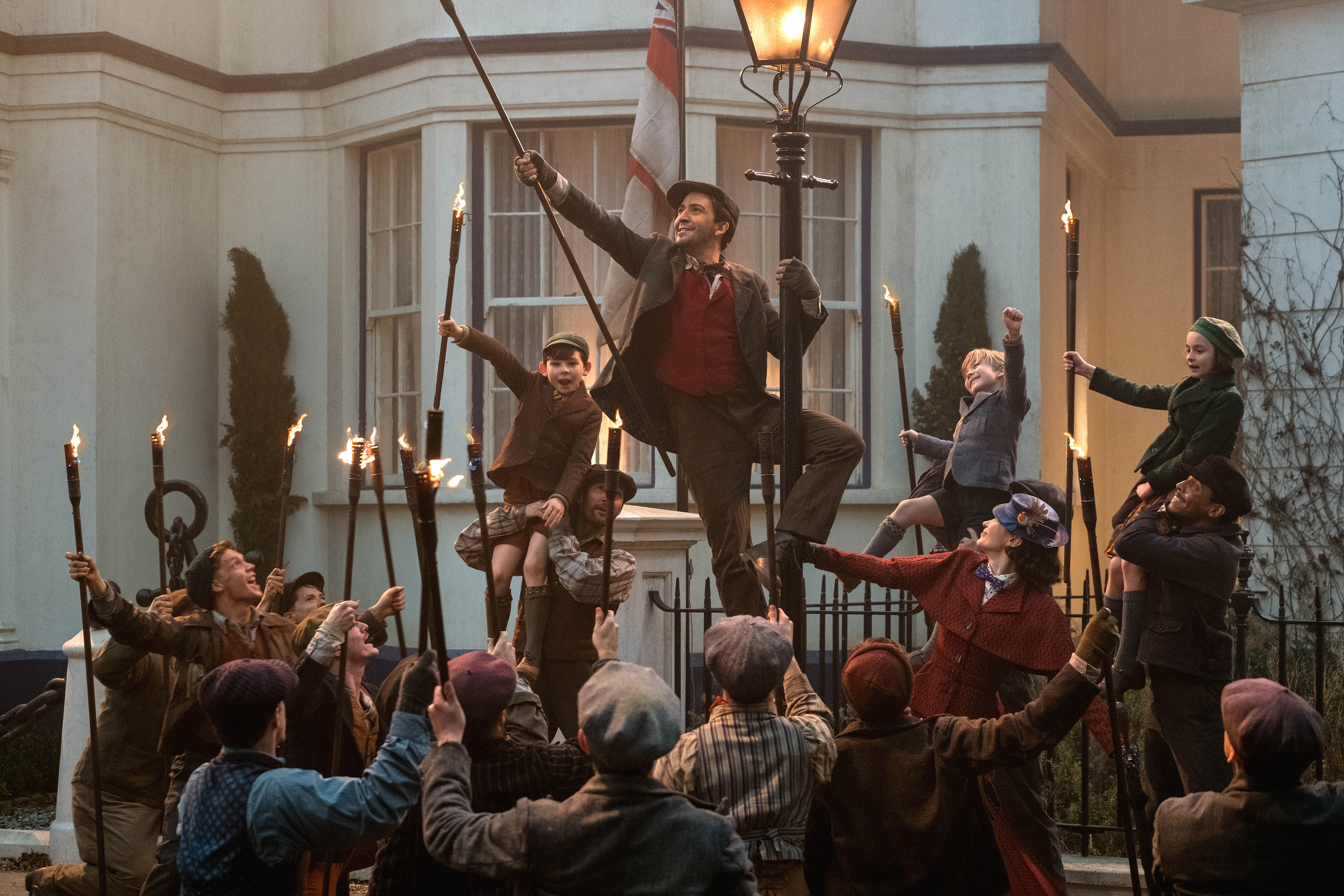
As the elder Banks siblings, Emily Mortimer and Ben Whishaw have an easy, believable rapport. Whishaw is moving as a father trying to build a thick wall around his grief in order to get through each day and take care of his children, and his performance may inspire viewers to break out the tissues. Jane is particularly well-rounded and played with sweetness and strength by Mortimer. Jane may still be “rather inclined to giggle,” as Mary Poppins points out, but she’s a thoroughly modern woman who wears trousers and organizes for worker’s rights while still maintaining her hopefulness and showing kindness to those around her, especially her brother and his children. The younger Banks siblings, as played by Pixie Davies, Nathanael Saleh, and Joel Dawson, are cute without being cloying, and strike the right balance between sadness, suspicion, and absolute wonder when finding themselves in fantastical settings.
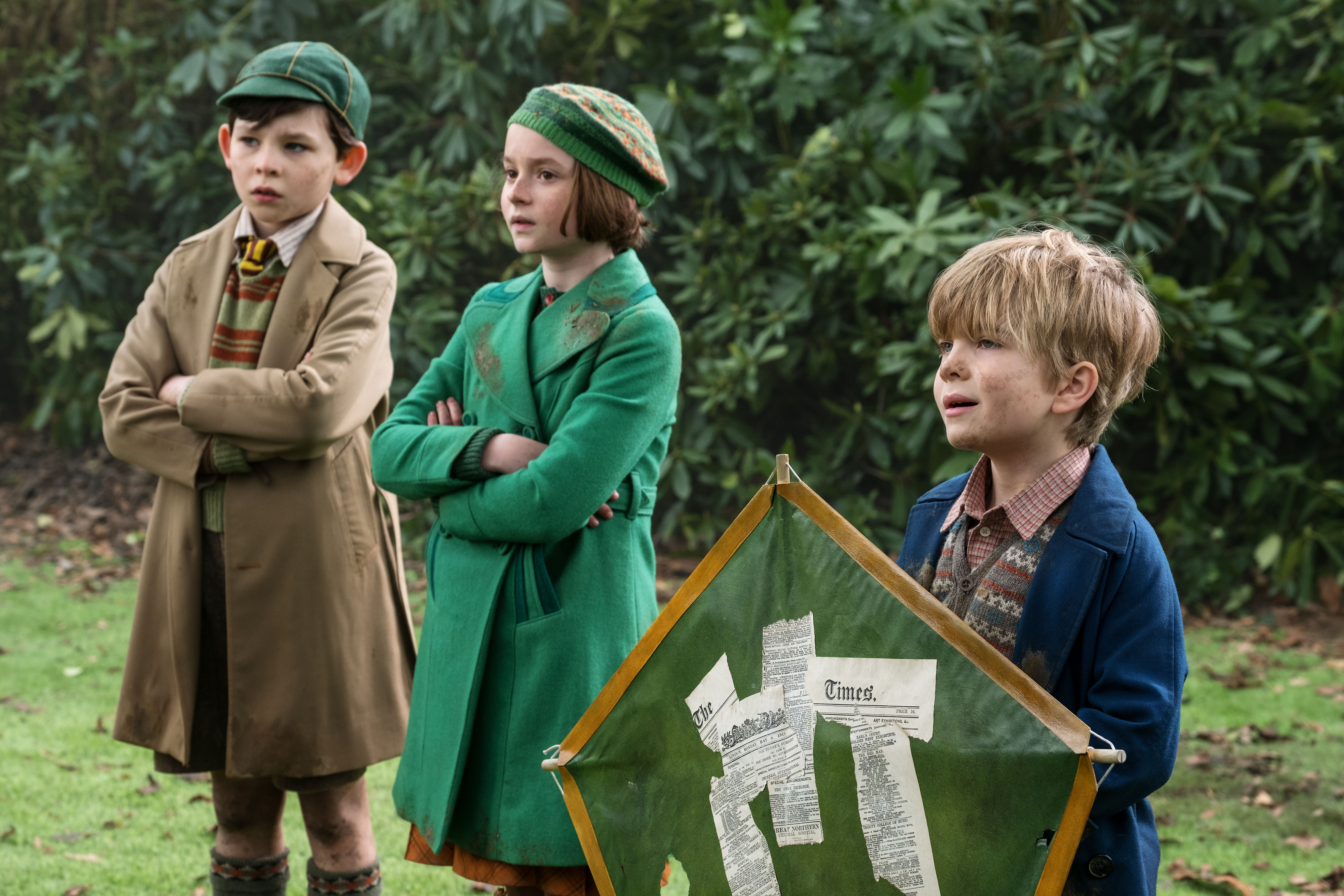
The supporting cast is excellent – actually unsurprising given the caliber of actors in the roles. Colin Firth (“The King’s Speech,” “Mamma Mia!”) uses his charisma to his advantage as Mr. Wilkins, the Fidelity Fiduciary Bank chairman with questionable intentions. Julie Walters, best known to audiences as Molly Weasley in the Harry Potter films, is endearing as Ellen, the housekeeper who tries in vain to keep things under control at 17 Cherry Tree Lane. As Cousin Topsy, Meryl Streep gives an eccentric, playful performance, tapping into her musical side for a song-and-dance number with Blunt, Miranda, and the children. “Mary Poppins” fans will likely be thrilled to see Dick Van Dyke appear in the film in a small, but significant role, and the original Jane Banks, Karen Dotrice, makes a cameo appearance on the streets of Cherry Tree Lane.
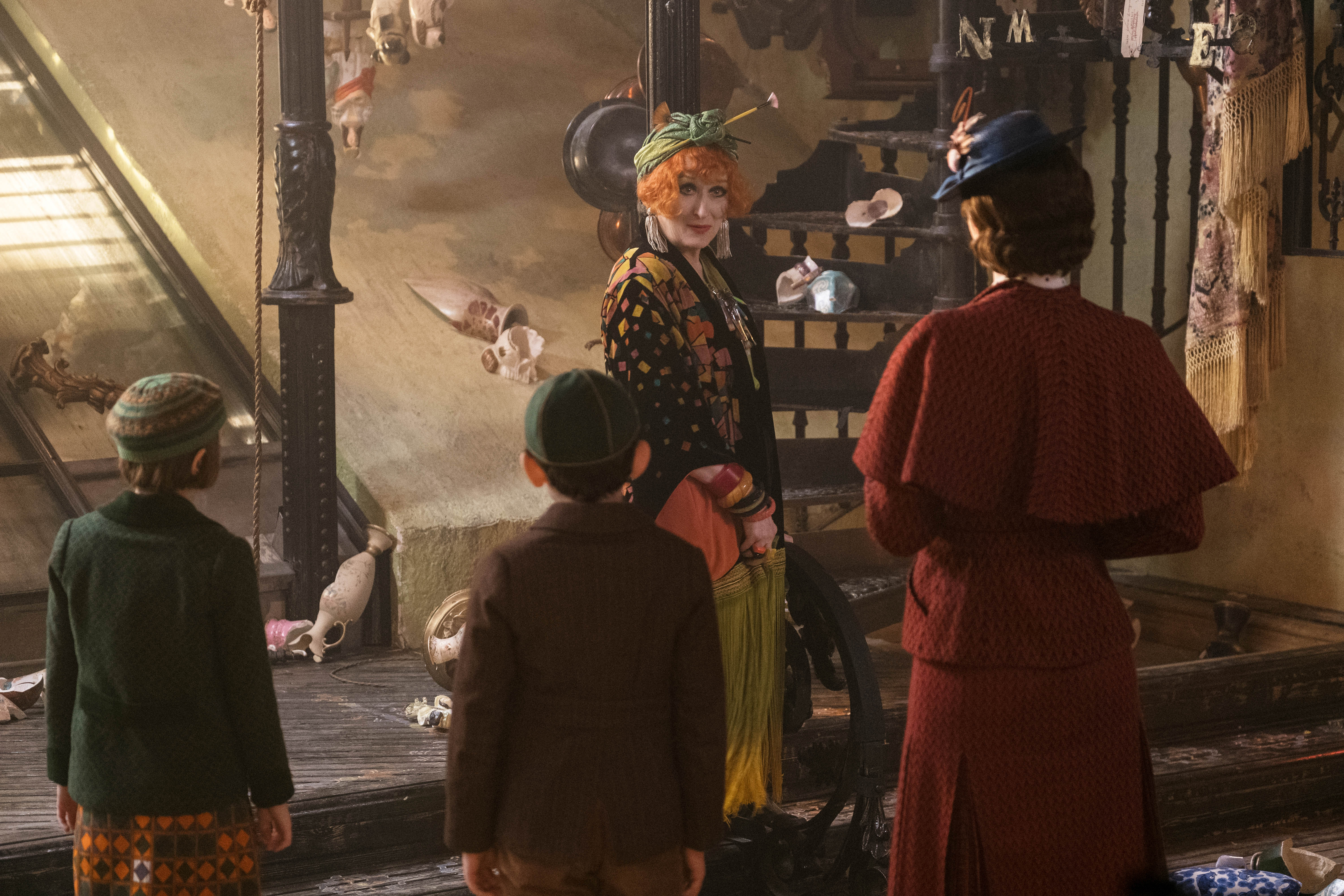
Speaking of Cherry Tree Lane, the production team recreated the Banks family’s famous residence beautifully, and the sets of the new film were well-matched to those in the original. (Sharp-eyed fans will want to keep their eyes open for props from “Mary Poppins” scattered throughout the Banks’ home.) But while the entirety of the first Poppins movie was filmed indoors on a soundstage, Marshall and team upped the ante by filming some scenes in real London locales. Like its predecessor, “Mary Poppins Returns” also mixes live action film with animation for its fantasy sequences – but this time around with a combination of CGI and hand-drawn animation. Visually, all the work paid off, as “Mary Poppins Returns” is pure eye candy, even in a setting as dark and dreary as 1930s London. Oscar-winning costume designer Sandy Powell adds vibrancy to the film with sumptuous, period-appropriate costumes in bright colors and appealing textures, including hand-painted pieces made to blend in with the animated sequences.
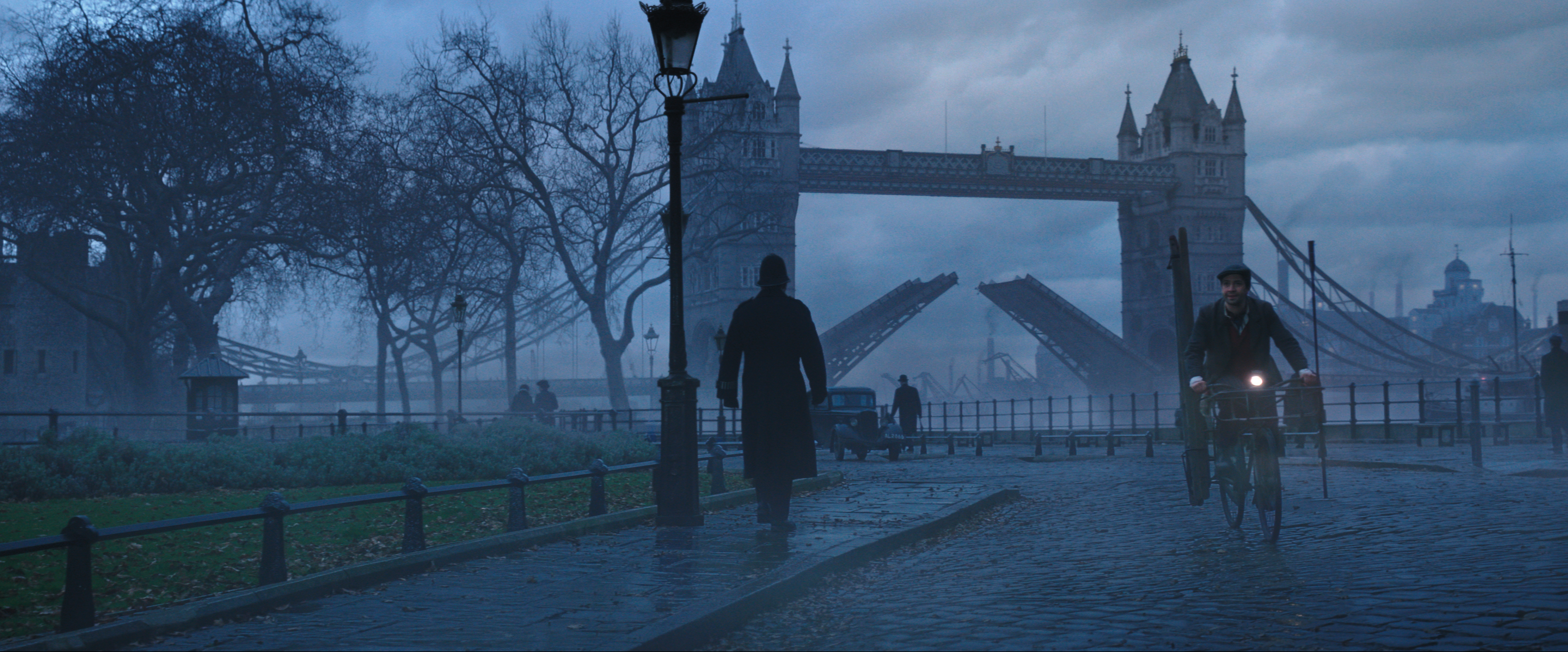
Composer Marc Shaiman (“Hairspray”) and lyricist Scott Wittman (“Smash”) had big shoes to fill when writing the movie’s musical numbers. Brothers Richard M. Sherman and the late Robert B. Sherman were the songwriting duo behind the memorable tunes in “Mary Poppins,” including “Spoonful of Sugar,” “Feed the Birds,” and the Oscar-winning “Chim Chim Cher-ee.” But Shaiman and Wittman were more than up to the task, crafting lush music that captures the aural atmosphere of the first movie while still feeling fresh and inventive.
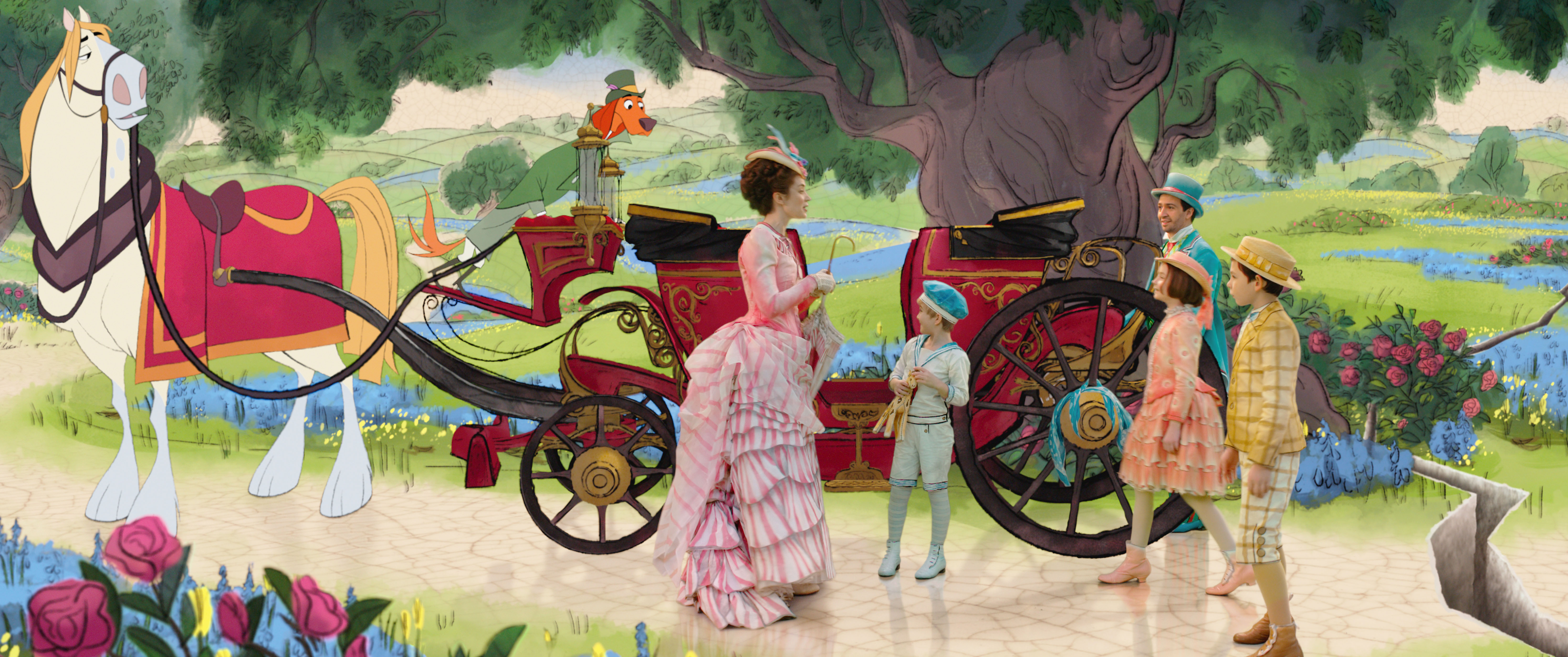
From the poignancy of “A Conversation” and “The Place Where Lost Things Go,” to the surprising sauciness of “A Cover Is Not the Book,” to the unabashed joy of “Trip a Little Light Fantastic,” the songs in “Mary Poppins Returns” are captivating from beginning to end. Shaiman’s score is gorgeous, making the film’s most stunning moments all the more memorable. Adding to the appeal of each musical number are heartfelt vocal performances and sensational choreography.
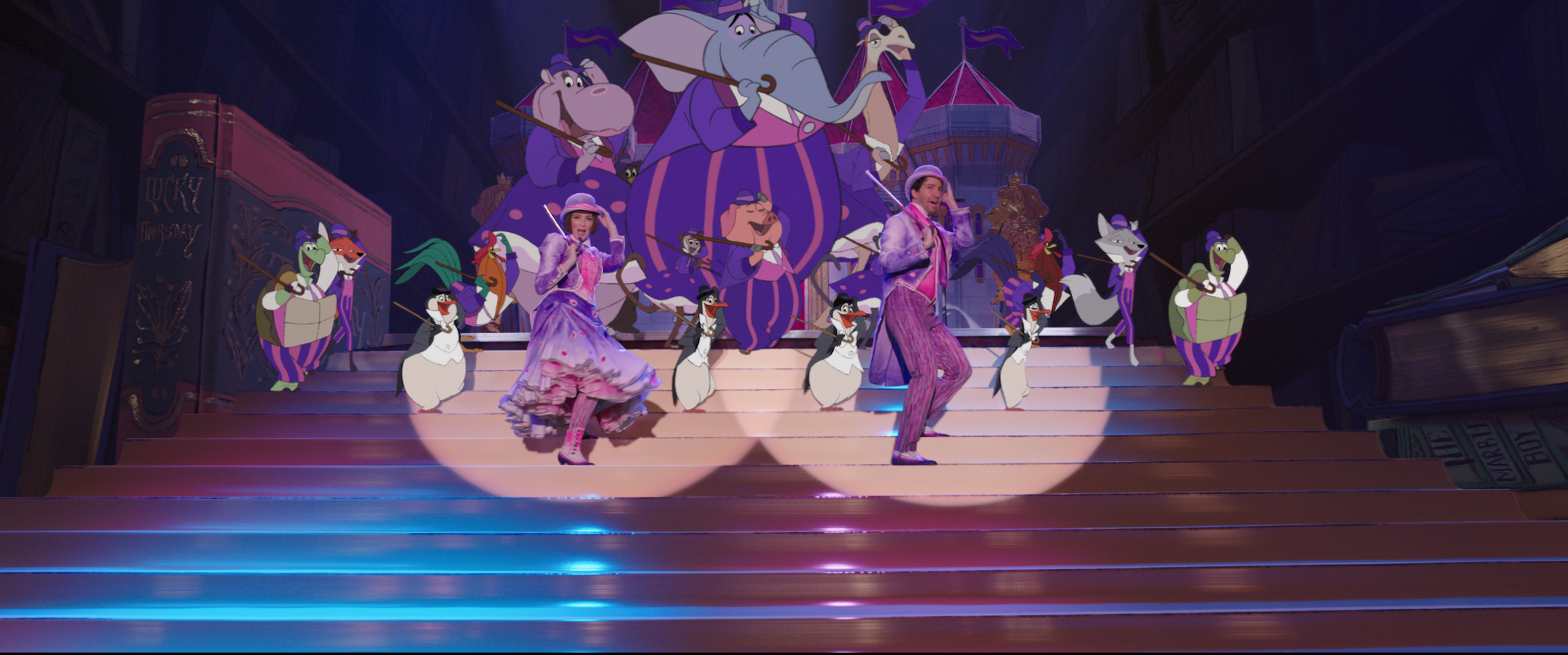
Screenwriter David Magee, along with Rob Marshall and his producing partner, John DeLuca, conceived the story behind the script, which was inspired by various chapters in P.L. Travers’ Poppins books. Though some of the adventures feel like unnecessary (albeit entertaining) sidetracks that don’t move the plot forward, that’s no different from the original “Mary Poppins,” and is actually beside the point. The primary goal of the fantasy sequences and several of the musical numbers seems to be to inspire the Banks children (and audiences) to simply sit back and enjoy these moments of pure joy, to experience wonder in real time and give themselves over to the magic happening in front of them. As the first Poppins film suggests, “just a spoonful of sugar helps the medicine go down,” and valuable life lessons can be found just as easily in moments of pure joy as they can in strife, if we listen closely and learn to recognize the substance beneath the splendor.
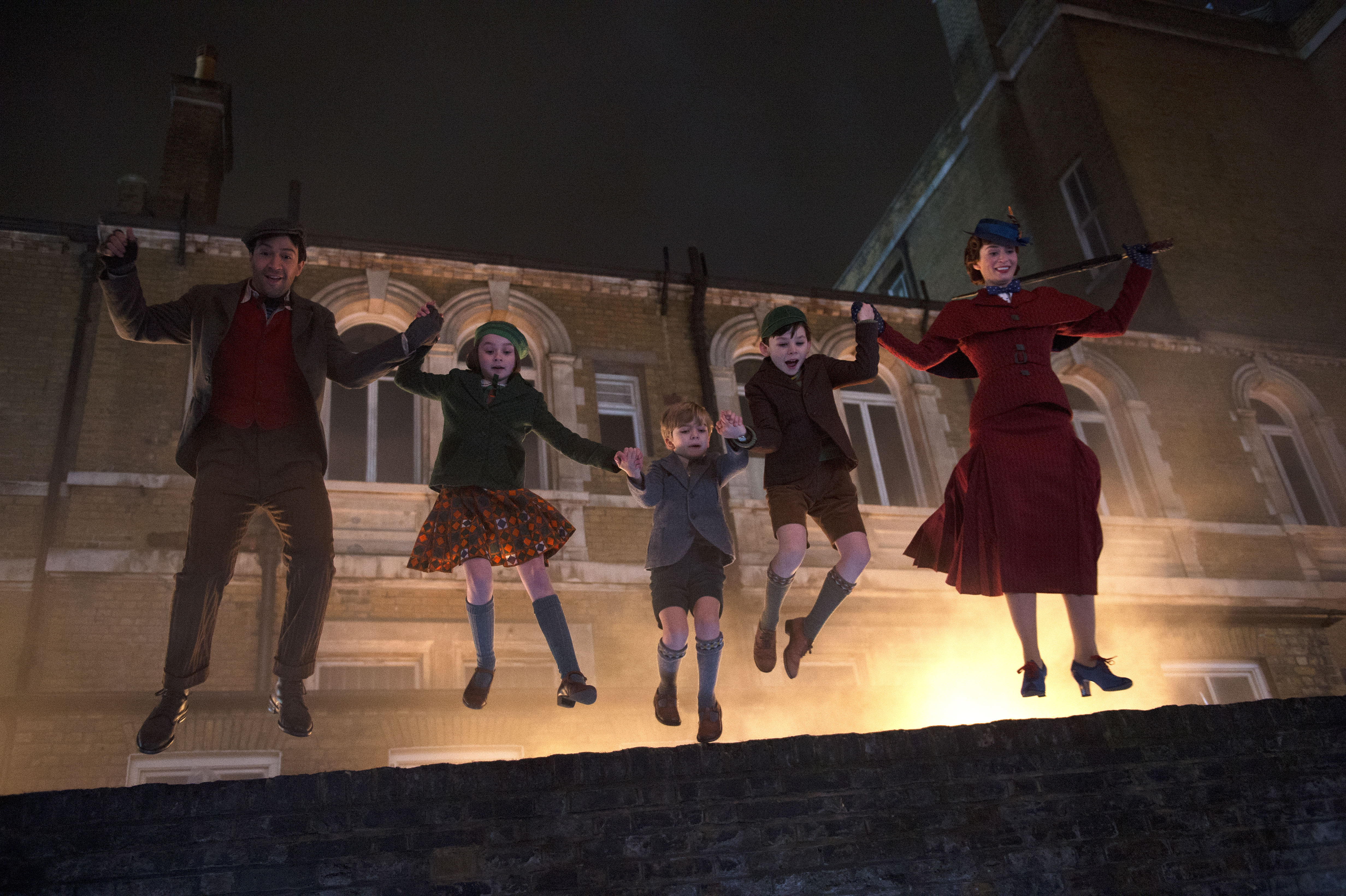
But will fans love “Mary Poppins Returns” as much as “Mary Poppins”? To quote the enigmatic nanny herself: “Anything is possible, even the impossible.”
Like MARY POPPINS RETURNS on Facebook: https://www.facebook.com/marypoppinsreturns/
Follow Walt Disney Studios on Twitter: https://twitter.com/disneystudios
Follow MARY POPPINS RETURNS on Instagram: https://www.instagram.com/marypoppinsreturns/
Visit the official MARY POPPINS RETURNS website: https://movies.disney.com/mary-poppins-returns
MARY POPPINS RETURNS is in theatres everywhere NOW!




